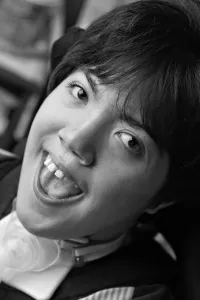II
Guidelines for Care
Tube Feeding
11.A. Procedure for gastrostomy tube feeding: gravity bolus method
11.B. Procedure for gastrostomy tube feeding: bolus or continuous feeding method by pump
11.C. Possible problems that require immediate attention
11.D. Possible problems that are not emergencies
11.E. Procedure for skin-level gastrostomy tube feeding: gravity bolus method
11.F. Procedure for skin-level gastrostomy tube feeding: bolus or continuous feeding method by pump
11.G. Possible problems that require immediate attention
11.H. Possible problems that are not emergencies
11.I. Procedure for checking placement of the nasogastric tube
11.J. Procedure for nasogastric tube feeding: gravity bolus method
11.K. Procedure for nasogastric tube feeding bolus or continuous feeding via pump
11.L. Possible problems that require immediate attention
11.M. Procedure for jejunostomy feeding: continuous feeding by pump
11.N. Possible problems that require immediate attention
11.O. Procedure for nasojejunal tube feeding
11.P. Possible problems that require immediate attention
Intravenous Lines
12.A. Procedure for central venous catheter dressing
12.B. Possible problems that require immediate attention
12.C. Possible problems that require immediate attention for accessed implanted ports
12.D. Procedure for peripherally inserted central catheter dressing change
12.E. Possible problems that require immediate attention
Dialysis
13.A. Possible problems that require immediate attention for the student requiring hemodialysis
13.B. Possible problems that require immediate attention for any student with renal failure
13.C. Possible problems for the student requiring peritoneal dialysis that require immediate attention
13.D. Possible problems that require immediate attention for any student with renal failure
Clean Intermittent Catheterization
14.A. Procedure for clean intermittent catheterization: male
14.B. Procedure for clean intermittent catheterization: female
14.C. Possible problems that require immediate attention
Ostomy Care
15.A. Procedure for changing a colostomy pouch
15.B. Possible problems when changing a colostomy pouch
15.C. Procedure for changing an ileostomy pouch
15.D. Possible problems when changing an ileostomy pouch
15.E. Procedure for changing a urostomy pouch
15.F. Procedure for catheterizing a continent urostomy/vesicostomy
15.G. Possible problems that require immediate attention
Respiratory Care
16.A. Procedure for using a nasal cannula
16.B. Procedure for using a simple oxygen mask
16.C. Procedure for using a tracheostomy mask
16.D. Possible problems that require immediate attention for students requiring oxygen
16.E. Possible problem that does not require immediate attention
16.F. Required equipment for tracheostomy care
16.G. Possible problems that require immediate attention for students with tracheostomies
16.H. Possible problems that are not emergencies
16.I. Procedure for tracheal suctioning
16.J. Possible problems that require immediate attention when suctioning
16.K. Procedure for changing a tracheostomy tube
16.L. Possible problems with tracheostomy tube changes that require immediate attention
16.M. Procedure for using a manual resuscitator with tracheostomy
16.N. Procedure for nose and mouth suctioning using suction machine
16.O. Possible problems with nose and mouth suctioning that require immediate attention
16.P. Procedure for aerosol treatment by nebulizer with air compressor
16.Q. Problems that require immediate attention for students requiring nebulizer treatment
16.R. Possible problems that are not emergencies
16.S. Procedure for checking ventilator features
16.T. Procedure for checking ventilator parameters
16.U. Possible problems that require immediate attention when using a ventilator
16.V. Procedure for using continuous positibe airway pressure and bilevel positive airway pressure
16.W. Possible problems that require immediate attention for students using continuous positive airway pressure and bilevel positive airway pressure
16.X. Procedure for using mechanical insufflation–exsuffliation
16.Y. Possible problems that require immediate attention for students receiving mechanical insufflation–exsufflation
16.Z. Procedure for using pulse oximetry
16.AA. Possible problems that require immediate attention for students requiring oximetry
16.AB. Procedures for using high-frequency chest wall oscillation
16.AC. Possible problems that require immediate attention for students receiving high-frequency chest wall oscillation
16.AD. Procedure for application of speaking valve
16.AE. Possible problems that require immediate attention when using a speaking valve
Diabetes
17.A. Procedure for insulin administration via syringe
17.B. Possible problems that require attention
17.C. Problems that require immediate attention
17.D. Procedure for insulin dose preparation
17.E. Procedure for mixed insulin dose preparation
17.F. Procedure for insulin administration via pen
17.G. Procedure for insulin pumps
17.H. Possible problem that requires attention
17.I. Problems that require immediate attention
17.J. Procedure for carbohydrate counting
17.K. Procedure for blood glucose testing
17.L. Procedure for urine ketone testing
17.M. Procedure for blood ketone testing
17.N. Problems that require immediate attention
17.O. Procedure for glucagon administration as emergency medication
17.P. Possible problems that require immediate attention
17.Q. Problems that require immediate attention
Neurological Issues
18.A. Procedure for seizure first aid
18.B. Possible problems that require immediate attention
18.C. Procedure for administering DIASTAT
18.D. Procedure for using the vagus nerve stimulation magnet
18.E. Possible problems related to vagal nerve stimulators
18.F. Possible problems that require immediate attention
18.G. Possible problems that require immediate attention


